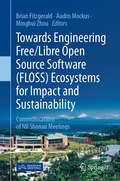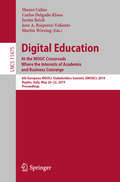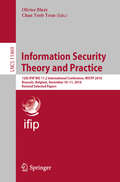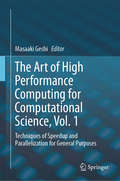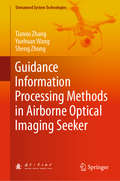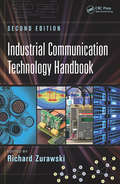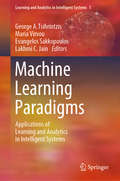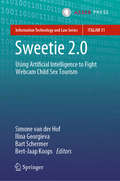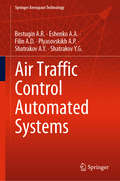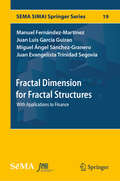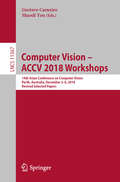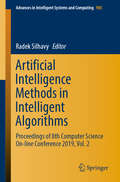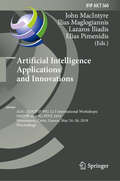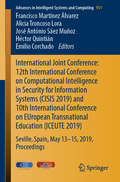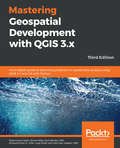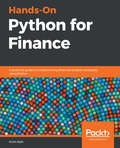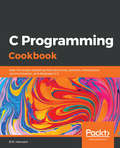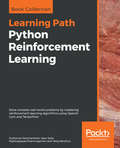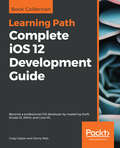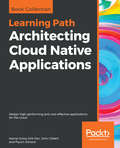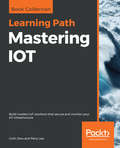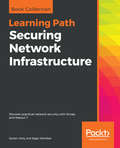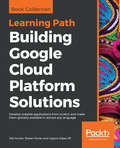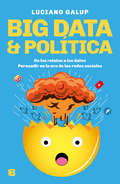- Table View
- List View
Towards Engineering Free/Libre Open Source Software (FLOSS) Ecosystems for Impact and Sustainability: Communications of NII Shonan Meetings
by Brian Fitzgerald Audris Mockus Minghui ZhouFree/libre open source software (FLOSS) ecosystems such as Linux have had a tremendous impact on computing and society and have captured the attention of businesses, researchers, and policy makers. Research on FLOSS has been ongoing for almost two decades. From an economic perspective, the most common topics involve motivation and organization. As commercial participation in FLOSS has become common, the question of how to combine FLOSS practice with commercial practice has been the subject of research, particularly with a view to understanding how to ensure sustainability of the ecosystem. This book is based on a Shonan meeting on FLOSS ecosystem sustainability held in June 2017. The meeting brought together a blend of established and young researchers who were actively studying the FLOSS phenomenon. These researchers were drawn from a variety of disciplines including software engineering, human computer interaction, information systems, computer-supported cooperative work, data mining, cognitive science, psychology, operations research, and management. Industry practitioners who were active in the FLOSS space also participated. This book presents the results of discussion on fundamental questions related to the impact and sustainability of FLOSS ecosystems, including: · How does an ecosystem form? How do different stakeholders work together to form a community that develops and maintains valuable and freely available software, and how does an ecosystem with millions of repositories and developers operate given the lack of centralized planning? · How does an ecosystem evolve in response to the environment as technology and needs evolve over time?· How do newcomers learn the protocols and practices of an ecosystem? How would they sustain the ecosystem? What is the relationship between people and ecosystem sustainability?
Digital Education: 6th European MOOCs Stakeholders Summit, EMOOCs 2019, Naples, Italy, May 20–22, 2019, Proceedings (Lecture Notes in Computer Science #11475)
by Carlos Delgado Kloos Mauro Calise Justin Reich Jose A. Ruiperez-Valiente Martin WirsingThis book constitutes the proceedings of the 6th European Conference on Massive Open Online Courses, EMOOCs 2019, held in Naples, Italy, in May 2019. The 15 full and 6 short papers presented in this volume were carefully reviewed and selected from 42 submissions. Massive Open Online Courses (MOOCs) have marked a milestone in the use of technology for education. The reach, potential, and possibilities of EMOOCs are immense. But they are not only restricted to global outreach: the same technology can be used to improve teaching on campus and training inside companies and institutions. The chapter 'Goal Setting and Striving in MOOCs. A Peek inside the Black Box of Learner Behaviour' is open access under a CC BY 4.0 license at link.springer.com.
Information Security Theory and Practice: 12th IFIP WG 11.2 International Conference, WISTP 2018, Brussels, Belgium, December 10–11, 2018, Revised Selected Papers (Lecture Notes in Computer Science #11469)
by Olivier Blazy Chan Yeob YeunThis volume constitutes the refereed proceedings of the 12th IFIP WG 11.2 International Conference on Information Security Theory and Practices, WISTP 2018, held in Brussels, Belgium, in December 2018. The 13 revised full papers and 2 short papers presented were carefully reviewed and selected from 45 submissions. The papers are organized in the following topical sections: real world; cryptography; artificial learning; cybersecurity; and Internet of things.
The Art of High Performance Computing for Computational Science, Vol. 1: Techniques of Speedup and Parallelization for General Purposes
by Masaaki GeshiThis book provides basic and practical techniques of parallel computing and related methods of numerical analysis for researchers who conduct numerical calculation and simulation. Although the techniques provided in this book are field-independent, these methods can be used in fields such as physics, chemistry, biology, earth sciences, space science, meteorology, disaster prevention, and manufacturing. In particular, those who develop software code in these areas will find this book useful. The contents are suitable for graduate students and researchers in computational science rather than novices at programming or informed experts in computer science.Starting with an introduction to the recent trends in computer architecture and parallel processing, Chapter 1 explains the basic knowledge of speedup programs with simple examples of numerical computing. Chapters 2 – 4 detail the basics of parallel programming, the message passing interface (MPI), and OpenMP and discuss hybrid parallelization techniques. Showing an actual example of adaptation, Chapter 5 gives an overview of performance tuning and communication optimizations. To deal with dense matrix calculations, Chapter 6 details the basics and practice of linear algebra calculation libraries BLAS and LAPACK, including some examples that can be easily reproduced by readers using free software. Focusing on sparse matrix calculations, Chapter 7 explains high performance algorithms for numerical linear algebra. Chapter 8 introduces the fast Fourier transform in large-scale systems from the basics. Chapter 9 explains optimization and related topics such as debug methods and version control systems. Chapter 10 discusses techniques for increasing computation accuracy as an essential topic in numerical calculation. This is the first of the two volumes that grew out of a series of lectures in the K computer project in Japan. The second volume will focus on advanced techniques and examples of applications in materials science.
Guidance Information Processing Methods in Airborne Optical Imaging Seeker (Unmanned System Technologies)
by Sheng Zhong Tianxu Zhang Yuehuan WangThis book covers all main aspects of guidance information processing technologies for airborne optical imaging seekers, including theoretical models; image pre-processing; automatic target detection, recognition and tracking; and embedded real-time processing systems. The book is divided into three major sections: firstly, a theoretical model for optical-seeker information processing is introduced; then information processing methods are presented, including target modeling, online image pre-processing, typical surface fixed-target detection and recognition, and moving-target detection and recognition; lastly, embedded real-time processing systems are introduced, including new system architectures, image processing ASIC/SoC design, embedded real-time operating systems, system implementation aspects, and system testing and evaluation technologies. The book offers a unique and valuable resource, helping readers understand both fundamental and advanced information processing technologies employed in airborne optical imaging seekers.
Industrial Communication Technology Handbook (Industrial Information Technology #8)
by Richard ZurawskiFeaturing contributions from major technology vendors, industry consortia, and government and private research establishments, the Industrial Communication Technology Handbook, Second Edition provides comprehensive and authoritative coverage of wire- and wireless-based specialized communication networks used in plant and factory automation, automotive applications, avionics, building automation, energy and power systems, train applications, and more. New to the Second Edition: 46 brand-new chapters and 21 substantially revised chapters Inclusion of the latest, most significant developments in specialized communication technologies and systems Addition of new application domains for specialized networks The Industrial Communication Technology Handbook, Second Edition supplies readers with a thorough understanding of the application-specific requirements for communication services and their supporting technologies. It is useful to a broad spectrum of professionals involved in the conception, design, development, standardization, and use of specialized communication networks as well as academic institutions engaged in engineering education and vocational training.
Machine Learning Paradigms: Applications of Learning and Analytics in Intelligent Systems (Learning and Analytics in Intelligent Systems #1)
by Lakhmi C. Jain Maria Virvou George A. Tsihrintzis Evangelos SakkopoulosThis book is the inaugural volume in the new Springer series on Learning and Analytics in Intelligent Systems. The series aims at providing, in hard-copy and soft-copy form, books on all aspects of learning, analytics, advanced intelligent systems and related technologies. These disciplines are strongly related and mutually complementary; accordingly, the new series encourages an integrated approach to themes and topics in these disciplines, which will result in significant cross-fertilization, research advances and new knowledge creation. To maximize the dissemination of research findings, the series will publish edited books, monographs, handbooks, textbooks and conference proceedings. This book is intended for professors, researchers, scientists, engineers and students. An extensive list of references at the end of each chapter allows readers to probe further into those application areas that interest them most.
Sweetie 2.0: Using Artificial Intelligence to Fight Webcam Child Sex Tourism (Information Technology and Law Series #31)
by Simone van der Hof Bert-Jaap Koops Bart Schermer Ilina GeorgievaThis book centres on Webcam Child Sex Tourism and the Sweetie Project initiated by the children’s rights organization Terre des Hommes in 2013 in response to the exponential increase of online child abuse. Webcam child sex tourism is a growing international problem, which not only encourages the abuse and sexual exploitation of children and provides easy access to child-abuse images, but which is also a crime involving a relatively low risk for offenders as live-streamed webcam performances leave few traces that law enforcement can use. Moreover, webcam child sex tourism often has a cross-border character, which leads to jurisdictional conflicts and makes it even harder to obtain evidence, launch investigations or prosecute suspects.Terre des Hommes set out to actively tackle webcam child sex tourism by employing a virtual 10-year old Philippine girl named Sweetie, a so-called chatbot, to identify offenders in chatrooms. Sweetie 1.0 could be deployed only if police officers participated in chats, and thus was limited in dealing with the large number of offenders. With this in mind, a more pro-active and preventive approach was adopted to tackle the issue. Sweetie 2.0 was developed with an automated chat function to track, identify and deter individuals using the internet to sexually abuse children. Using chatbots allows the monitoring of larger parts of the internet to locate and identify (potential) offenders, and to send them messages to warn of the legal consequences should they proceed further.But using artificial intelligence raises serious legal questions. For instance, is sexually interacting with a virtual child actually a criminal offence? How do rules of criminal procedure apply to Sweetie as investigative software? Does using Sweetie 2.0 constitute entrapment? This book, the outcome of a comparative law research initiative by Leiden University’s Center for Law and Digital Technologies (eLaw) and the Tilburg Institute for Law, Technology, and Society (TILT), addresses the application of substantive criminal law and criminal procedure to Sweetie 2.0 within various jurisdictions around the world.This book is especially relevant for legislators and policy-makers, legal practitioners in criminal law, and all lawyers and academics interested in internet-related sexual offences and in Artificial Intelligence and law.Professor Simone van der Hof is General Director of Research at t he Center for Law and Digital Technologies (eLaw) of the Leiden Law School at Leiden University, The Netherlands. Ilina Georgieva, LL.M., is a PhD researcher at the Faculty of Governance and Global Affairs at Leiden University, Bart Schermer is an associate professor at the Center for Law and Digital Technologies (eLaw) of the Leiden Law School, and Professor Bert-Jaap Koops is Professor of Regulation and Technology at the Tilburg Institute for Law, Technology, and Society (TILT), Tilburg University, The Netherlands.
Air Traffic Control Automated Systems (Springer Aerospace Technology)
by Shatrakov A.Y. Shatrakov Y.G. Bestugin A.R. Eshenko A.A. Filin A.D. Plyasovskikh A.P.This book highlights operation principles for Air Traffic Control Automated Systems (ATCAS), new scientific directions in design and application of dispatching training simulators and parameters of ATCAS radio equipment items for aircraft positioning. This book is designed for specialists in air traffic control and navigation at a professional and scientific level. The following topics are also included in this book: personnel actions in emergency, including such unforeseen circumstances as communication failure, airplane wandering off course, unrecognized aircraft appearance in the air traffic service zone, aerial target interception, fuel draining, airborne collision avoidance system (ACAS) alarm, emergency stacking and volcanic ash cloud straight ahead.
Fractal Dimension for Fractal Structures: With Applications to Finance (SEMA SIMAI Springer Series #19)
by Manuel Fernández-Martínez Juan Luis García Guirao Miguel Ángel Sánchez-Granero Juan Evangelista Trinidad SegoviaThis book provides a generalised approach to fractal dimension theory from the standpoint of asymmetric topology by employing the concept of a fractal structure. The fractal dimension is the main invariant of a fractal set, and provides useful information regarding the irregularities it presents when examined at a suitable level of detail. New theoretical models for calculating the fractal dimension of any subset with respect to a fractal structure are posed to generalise both the Hausdorff and box-counting dimensions. Some specific results for self-similar sets are also proved. Unlike classical fractal dimensions, these new models can be used with empirical applications of fractal dimension including non-Euclidean contexts. In addition, the book applies these fractal dimensions to explore long-memory in financial markets. In particular, novel results linking both fractal dimension and the Hurst exponent are provided. As such, the book provides a number of algorithms for properly calculating the self-similarity exponent of a wide range of processes, including (fractional) Brownian motion and Lévy stable processes. The algorithms also make it possible to analyse long-memory in real stocks and international indexes.This book is addressed to those researchers interested in fractal geometry, self-similarity patterns, and computational applications involving fractal dimension and Hurst exponent.
Computer Vision – ACCV 2018 Workshops: 14th Asian Conference on Computer Vision, Perth, Australia, December 2–6, 2018, Revised Selected Papers (Lecture Notes in Computer Science #11367)
by Gustavo Carneiro Shaodi YouThis LNCS workshop proceedings, ACCV 2018, contains carefully reviewed and selected papers from 11 workshops, each having different types or programs: Scene Understanding and Modelling (SUMO) Challenge, Learning and Inference Methods for High Performance Imaging (LIMHPI), Attention/Intention Understanding (AIU), Museum Exhibit Identification Challenge (Open MIC) for Domain Adaptation and Few-Shot Learning, RGB-D - Sensing and Understanding via Combined Colour and Depth, Dense 3D Reconstruction for Dynamic Scenes, AI Aesthetics in Art and Media (AIAM), Robust Reading (IWRR), Artificial Intelligence for Retinal Image Analysis (AIRIA), Combining Vision and Language, Advanced Machine Vision for Real-life and Industrially Relevant Applications (AMV).
The End of Forgetting: Growing Up with Social Media
by Kate EichhornThanks to Facebook and Instagram, our younger selves have been captured and preserved online. But what happens, Kate Eichhorn asks, when we can’t leave our most embarrassing moments behind? Rather than a childhood cut short by a loss of innocence, the real crisis of the digital age may be the specter of a childhood that can never be forgotten.
Artificial Intelligence Methods in Intelligent Algorithms: Proceedings of 8th Computer Science On-line Conference 2019, Vol. 2 (Advances in Intelligent Systems and Computing #985)
by Radek SilhavyThis book discusses the current trends in and applications of artificial intelligence research in intelligent systems. Including the proceedings of the Artificial Intelligence Methods in Intelligent Algorithms Section of the 8th Computer Science On-line Conference 2019 (CSOC 2019), held in April 2019, it features papers on neural networks algorithms, optimisation algorithms and real-world issues related to the application of artificial methods.
Artificial Intelligence Applications and Innovations: AIAI 2019 IFIP WG 12.5 International Workshops: MHDW and 5G-PINE 2019, Hersonissos, Crete, Greece, May 24–26, 2019, Proceedings (IFIP Advances in Information and Communication Technology #560)
by Elias Pimenidis Lazaros Iliadis Ilias Maglogiannis John MacIntyreThis book constitutes the refereed proceedings of two International Workshops held as parallel events of the 15th IFIP WG 12.5 International Conference on Artificial Intelligence Applications and Innovations, AIAI 2019, in Hersonissos, Crete, Greece, in May 2019: the 8th Mining Humanistic Data Workshop, MHDW 2019, and the 4th Workshop on 5G-Putting Intelligence to the Network Edge, 5G-PINE 2019.The 6 full papers and 4 short papers presented at MHDW 2019 were carefully reviewed and selected from 13 submissions; out of the 14 papers submitted to 5G-PINE 2019, 6 were accepted as full papers and 1 as short paper. The MHDW papers focus on the application of innovative as well as existing data matching, fusion and mining and knowledge discovery and management techniques (such as decision rules, decision trees, association rules, ontologies and alignments, clustering, filtering, learning, classifier systems, neural networks, support vector machines, preprocessing, post processing, feature selection, visualization techniques) to data derived from all areas of humanistic sciences, e.g., linguistic, historical, behavioral, psychological, artistic, musical, educational, social, and ubiquitous computing and bioinformatics. The papers presented at 5G-PINE focus on several innovative findings coming directly from modern European research in the area of modern 5G telecommunications infrastructures and related innovative services and cover a wide variety of technical and business aspects promoting options for growth and development.
International Joint Conference: Seville, Spain, May 13th-15th, 2019 Proceedings (Advances in Intelligent Systems and Computing #951)
by Héctor Quintián Emilio Corchado Francisco Martínez Álvarez Alicia Troncoso Lora José António Sáez MuñozThis volume presents papers presented at CISIS 2019 and ICEUTE 2019, held in the beautiful and historic city of Seville (Spain) in May 2019.The 12th CISIS 2019 conference offered a meeting opportunity for academic and industry-related researchers form the various communities of computational intelligence, information security and data mining, and the need for intelligent, flexible behaviour by large, complex systems, especially in mission-critical domains, was the catalyst and the aggregation stimulus for the event. The book covers current topics such as cryptographic and data analytics solutions to fulfil least minimum privilege and endorse least minimum effort in information systems. The book also includes 15 papers from the 10th ICEUTE 2019, covering topics like new approaches to assess competencies and innovation in computer science education.
Mastering Geospatial Development with QGIS 3.x: An in-depth guide to becoming proficient in spatial data analysis using QGIS 3.4 and 3.6 with Python, 3rd Edition
by Shammunul Islam Simon Miles GISP Menke GISP Smith Jr. Luigi Pirelli John Van Hoesen, GISP,Go beyond the basics and unleash the full power of QGIS 3.4 and 3.6 with practical, step-by-step examples Key Features One-stop solution to all of your GIS needs Master QGIS by learning about database integration, and geoprocessing tools Learn about the new and updated Processing toolbox and perform spatial analysis Book Description QGIS is an open source solution to GIS and widely used by GIS professionals all over the world. It is the leading alternative to proprietary GIS software. Although QGIS is described as intuitive, it is also, by default, complex. Knowing which tools to use and how to apply them is essential to producing valuable deliverables on time. Starting with a refresher on the QGIS basics and getting you acquainted with the latest QGIS 3.6 updates, this book will take you all the way through to teaching you how to create a spatial database and a GeoPackage. Next, you will learn how to style raster and vector data by choosing and managing different colors. The book will then focus on processing raster and vector data. You will be then taught advanced applications, such as creating and editing vector data. Along with that, you will also learn about the newly updated Processing Toolbox, which will help you develop the advanced data visualizations. The book will then explain to you the graphic modeler, how to create QGIS plugins with PyQGIS, and how to integrate Python analysis scripts with QGIS. By the end of the book, you will understand how to work with all aspects of QGIS and will be ready to use it for any type of GIS work. What you will learn Create and manage a spatial database Get to know advanced techniques to style GIS data Prepare both vector and raster data for processing Add heat maps, live layer effects, and labels to your maps Master LAStools and GRASS integration with the Processing Toolbox Edit and repair topological data errors Automate workflows with batch processing and the QGIS Graphical Modeler Integrate Python scripting into your data processing workflows Develop your own QGIS plugins Who this book is for If you are a GIS professional, a consultant, a student, or perhaps a fast learner who wants to go beyond the basics of QGIS, then this book is for you. It will prepare you to realize the full potential of QGIS.
Hands-On Python for Finance: A practical guide to implementing financial analysis strategies using Python
by Krish NaikLearn and implement quantitative finance using popular Python libraries like NumPy, pandas, and Keras Key Features Understand Python data structure fundamentals and work with time series data Use popular Python libraries including TensorFlow, Keras, and SciPy to deploy key concepts in quantitative finance Explore various Python programs and learn finance paradigms Book Description Python is one of the most popular languages used for quantitative finance. With this book, you'll explore the key characteristics of Python for finance, solve problems in finance, and understand risk management. The book starts with major concepts and techniques related to quantitative finance, and an introduction to some key Python libraries. Next, you'll implement time series analysis using pandas and DataFrames. The following chapters will help you gain an understanding of how to measure the diversifiable and non-diversifiable security risk of a portfolio and optimize your portfolio by implementing Markowitz Portfolio Optimization. Sections on regression analysis methodology will help you to value assets and understand the relationship between commodity prices and business stocks. In addition to this, you'll be able to forecast stock prices using Monte Carlo simulation. The book will also highlight forecast models that will show you how to determine the price of a call option by analyzing price variation. You'll also use deep learning for financial data analysis and forecasting. In the concluding chapters, you will create neural networks with TensorFlow and Keras for forecasting and prediction. By the end of this book, you will be equipped with the skills you need to perform different financial analysis tasks using Python What you will learn Clean financial data with data preprocessing Visualize financial data using histograms, color plots, and graphs Perform time series analysis with pandas for forecasting Estimate covariance and the correlation between securities and stocks Optimize your portfolio to understand risks when there is a possibility of higher returns Calculate expected returns of a stock to measure the performance of a portfolio manager Create a prediction model using recurrent neural networks (RNN) with Keras and TensorFlow Who this book is for This book is ideal for aspiring data scientists, Python developers and anyone who wants to start performing quantitative finance using Python. You can also make this beginner-level guide your first choice if you're looking to pursue a career as a financial analyst or a data analyst. Working knowledge of Python programming language is necessary.
C Programming Cookbook: Over 40 recipes exploring data structures, pointers, interprocess communication, and database in C
by B.M. HarwaniA comprehensive guide with curated recipes to help you gain a deeper understanding of modern C. Key Features Learn how to make your applications swift and robust by leveraging powerful features of C Understand the workings of arrays, strings, functions, and more down to how they operate in memory Master process synchronization during multi-tasking and server-client process communication Book Description C is a high-level language that's popular among developers. It enables you to write drivers for different devices, access machine-level hardware, apply dynamic memory allocation, and much more. With self-contained tutorials, known as recipes, this book will guide you in dealing with C and its idiosyncrasies and help you benefit from its latest features. Beginning with common tasks, each recipe addresses a specific problem followed by explaining the solution to get you acquainted with what goes on under the hood. You will explore core concepts of the programming language, including how to work with strings, pointers, and single and multi-dimensional arrays. You will also learn how to break a large application into small modules by creating functions, handling files, and using a database. Finally, the book will take you through advanced concepts such as concurrency and interprocess communication. By the end of this book, you'll have a clear understanding and deeper knowledge of C programming, which will help you become a better developer. What you will learn Manipulate single and multi-dimensional arrays Perform complex operations on strings Understand how to use pointers and memory optimally Discover how to use arrays, functions, and strings to make large applications Implement multitasking using threads and process synchronization Establish communication between two or more processes using different techniques Store simple text in files and store data in a database Who this book is for If you're a programmer with basic experience in C and want to leverage its features through modern programming practices, then this book is for you.
Python Reinforcement Learning: Solve complex real-world problems by mastering reinforcement learning algorithms using OpenAI Gym and TensorFlow
by Rajalingappaa Shanmugamani Sudharsan Ravichandiran Sean Saito Yang WenzhuoApply modern reinforcement learning and deep reinforcement learning methods using Python and its powerful libraries Key Features Your entry point into the world of artificial intelligence using the power of Python An example-rich guide to master various RL and DRL algorithms Explore the power of modern Python libraries to gain confidence in building self-trained applications Book Description Reinforcement Learning (RL) is the trending and most promising branch of artificial intelligence. This Learning Path will help you master not only the basic reinforcement learning algorithms but also the advanced deep reinforcement learning algorithms. The Learning Path starts with an introduction to RL followed by OpenAI Gym, and TensorFlow. You will then explore various RL algorithms, such as Markov Decision Process, Monte Carlo methods, and dynamic programming, including value and policy iteration. You'll also work on various datasets including image, text, and video. This example-rich guide will introduce you to deep RL algorithms, such as Dueling DQN, DRQN, A3C, PPO, and TRPO. You will gain experience in several domains, including gaming, image processing, and physical simulations. You'll explore TensorFlow and OpenAI Gym to implement algorithms that also predict stock prices, generate natural language, and even build other neural networks. You will also learn about imagination-augmented agents, learning from human preference, DQfD, HER, and many of the recent advancements in RL. By the end of the Learning Path, you will have all the knowledge and experience needed to implement RL and deep RL in your projects, and you enter the world of artificial intelligence to solve various real-life problems. This Learning Path includes content from the following Packt products: Hands-On Reinforcement Learning with Python by Sudharsan Ravichandiran Python Reinforcement Learning Projects by Sean Saito, Yang Wenzhuo, and Rajalingappaa Shanmugamani What you will learn Train an agent to walk using OpenAI Gym and TensorFlow Solve multi-armed-bandit problems using various algorithms Build intelligent agents using the DRQN algorithm to play the Doom game Teach your agent to play Connect4 using AlphaGo Zero Defeat Atari arcade games using the value iteration method Discover how to deal with discrete and continuous action spaces in various environments Who this book is for If you're an ML/DL enthusiast interested in AI and want to explore RL and deep RL from scratch, this Learning Path is for you. Prior knowledge of linear algebra is expected.
Complete iOS 12 Development Guide: Become a professional iOS developer by mastering Swift, Xcode 10, ARKit, and Core ML
by Donny Wals Craig ClaytonLearn to create professional-grade iOS applications for the App Store using the latest iOS 12 features and other helpful tools Key Features Explore the distinctive design principles that define the iOS user experience Train and use machine learning models with Core ML 2 and Create ML Delve into advanced animations with UIViewPropertyAnimator and UIKitDynamics Book Description With Apple users spending more money in the App Store, there are plenty of development opportunities for professional iOS developers. This Learning Path is a direct route to iOS development, which will take you through the basics and help you put principles into practice. For experienced programmers, this book will help you gain insights into the latest iOS 12 features. This book is also useful for beginners who want to gain expertise in iOS development. You'll start with an introduction to iOS development, Xcode, and Swift. To give your app the edge, you'll get up to speed with advanced iOS topics, such as gestures and animations. Next, you will understand the latest Swift 4.2 and iOS 12 developments by incorporating new features, such as the latest in notifications, custom-UI notifications, maps, and recent additions in SiriKit. With these tools, you'll be able to write efficient, readable, and maintainable Swift code that maintains industry best practices. By the end of the book, you will have the confidence to build iOS 12 applications that harness advanced techniques and make the best use of the latest features. This Learning Path includes content from the following Packt products: iOS 12 Programming for Beginners - Third Edition by Craig Clayton Mastering iOS 12 Programming - Third Edition by Donny Wals What you will learn Build a responsive user interface (UI) and add privacy to your custom-rich notifications Set up SiriKit to add voice for Siri shortcuts Integrate iMessage, Siri, and more in your app through app extensions Use TestFlight to collect feedback before releasing your apps on the App Store Use Auto Layout to create complex layouts that look visually appealing on any device Enhance your app by building your own profiling tools Create engaging augmented reality experiences with ARKit 2 Who this book is for If you are completely new to Swift, iOS, or programming and want to become an expert in developing iOS applications, this Learning Path is for you. You'll also find this Learning Path useful if you're an experienced programmer looking to explore the latest iOS 12 features.
Architecting Cloud Native Applications: Design high-performing and cost-effective applications for the cloud
by John Gilbert Kamal Arora Erik Farr Piyum ZonoozApply cloud native patterns and practices to deliver responsive, resilient, elastic, and message-driven systems with confidence Key Features Discover best practices for applying cloud native patterns to your cloud applications Explore ways to effectively plan resources and technology stacks for high security and fault tolerance Gain insight into core architectural principles using real-world examples Book Description Cloud computing has proven to be the most revolutionary IT development since virtualization. Cloud native architectures give you the benefit of more flexibility over legacy systems. This Learning Path teaches you everything you need to know for designing industry-grade cloud applications and efficiently migrating your business to the cloud. It begins by exploring the basic patterns that turn your database inside out to achieve massive scalability. You'll learn how to develop cloud native architectures using microservices and serverless computing as your design principles. Then, you'll explore ways to continuously deliver production code by implementing continuous observability in production. In the concluding chapters, you'll learn about various public cloud architectures ranging from AWS and Azure to the Google Cloud Platform, and understand the future trends and expectations of cloud providers. By the end of this Learning Path, you'll have learned the techniques to adopt cloud native architectures that meet your business requirements. This Learning Path includes content from the following Packt products: Cloud Native Development Patterns and Best Practices by John Gilbert Cloud Native Architectures by Erik Farr et al. What you will learn Understand the difference between cloud native and traditional architecture Automate security controls and configuration management Minimize risk by evolving your monolithic systems into cloud native applications Explore the aspects of migration, when and why to use it Apply modern delivery and testing methods to continuously deliver production code Enable massive scaling by turning your database inside out Who this book is for This Learning Path is designed for developers who want to progress into building cloud native systems and are keen to learn the patterns involved. Software architects, who are keen on designing scalable and highly available cloud native applications, will also find this Learning Path very useful. To easily grasp these concepts, you will need basic knowledge of programming and cloud computing.
Mastering IOT: Build modern IoT solutions that secure and monitor your IoT infrastructure
by Perry Lea Colin DowLeverage the full potential of IoT with the combination of Raspberry Pi 3 and Python and architect a complete IoT system that is the best fit for your organization Key Features Build complex Python-based applications with IoT Explore different concepts, technologies, and tradeoffs in the IoT architectural stack Delve deep into each element of the IoT design—from sensors to the cloud Book Description The Internet of Things (IoT) is the fastest growing technology market. Industries are embracing IoT technologies to improve operational expenses, product life, and people's well-being. We'll begin our journey with an introduction to Raspberry Pi and quickly jump right into Python programming. We'll learn all concepts through multiple projects, and then reinforce our learnings by creating an IoT robot car. We'll examine modern sensor systems and focus on what their power and functionality can bring to our system. We'll also gain insight into cloud and fog architectures, including the OpenFog standards. The Learning Path will conclude by discussing three forms of prevalent attacks and ways to improve the security of our IoT infrastructure. By the end of this Learning Path, we will have traversed the entire spectrum of technologies needed to build a successful IoT system, and will have the confidence to build, secure, and monitor our IoT infrastructure. This Learning Path includes content from the following Packt products: Internet of Things Programming Projects by Colin Dow Internet of Things for Architects by Perry Lea What you will learn Build a home security dashboard using an infrared motion detector Receive data and display it with an actuator connected to the Raspberry Pi Build an IoT robot car that is controlled via the Internet Use IP-based communication to easily and quickly scale your system Explore cloud protocols, such as Message Queue Telemetry Transport (MQTT) and CoAP Secure communication with encryption forms, such as symmetric key Who this book is for This Learning Path is designed for developers, architects, and system designers who are interested in building exciting projects with Python by understanding the IoT ecosphere, various technologies, and tradeoffs. Technologists and technology managers who want to develop a broad view of IoT architecture, will also find this Learning Path useful. Prior programming knowledge of Python is a must.
Securing Network Infrastructure: Discover practical network security with Nmap and Nessus 7
by Sagar Rahalkar Sairam JettyPlug the gaps in your network's infrastructure with resilient network security models Key Features Develop a cost-effective and end-to-end vulnerability management program Explore best practices for vulnerability scanning and risk assessment Understand and implement network enumeration with Nessus and Network Mapper (Nmap) Book Description Digitization drives technology today, which is why it's so important for organizations to design security mechanisms for their network infrastructures. Analyzing vulnerabilities is one of the best ways to secure your network infrastructure. This Learning Path begins by introducing you to the various concepts of network security assessment, workflows, and architectures. You will learn to employ open source tools to perform both active and passive network scanning and use these results to analyze and design a threat model for network security. With a firm understanding of the basics, you will then explore how to use Nessus and Nmap to scan your network for vulnerabilities and open ports and gain back door entry into a network. As you progress through the chapters, you will gain insights into how to carry out various key scanning tasks, including firewall detection, OS detection, and access management to detect vulnerabilities in your network. By the end of this Learning Path, you will be familiar with the tools you need for network scanning and techniques for vulnerability scanning and network protection. This Learning Path includes content from the following Packt books: Network Scanning Cookbook by Sairam Jetty Network Vulnerability Assessment by Sagar Rahalkar What you will learn Explore various standards and frameworks for vulnerability assessments and penetration testing Gain insight into vulnerability scoring and reporting Discover the importance of patching and security hardening Develop metrics to measure the success of a vulnerability management program Perform configuration audits for various platforms using Nessus Write custom Nessus and Nmap scripts on your own Install and configure Nmap and Nessus in your network infrastructure Perform host discovery to identify network devices Who this book is for This Learning Path is designed for security analysts, threat analysts, and security professionals responsible for developing a network threat model for an organization. Professionals who want to be part of a vulnerability management team and implement an end-to-end robust vulnerability management program will also find this Learning Path useful.
Building Google Cloud Platform Solutions: Develop scalable applications from scratch and make them globally available in almost any language
by Steven Porter Ted Hunter Legorie Rajan PSBuild cost-effective and robust cloud solutions with Google Cloud Platform (GCP) using these simple and practical recipes Key Features Explore the various service offerings of the GCP Host a Python application on Google Compute Engine Securely maintain application states with Cloud Storage, Datastore, and Bigtable Book Description GCP is a cloud computing platform with a wide range of products and services that enable you to build and deploy cloud-hosted applications. This Learning Path will guide you in using GCP and designing, deploying, and managing applications on Google Cloud. You will get started by learning how to use App Engine to access Google's scalable hosting and build software that runs on this framework. With the help of Google Compute Engine, you'll be able to host your workload on virtual machine instances. The later chapters will help you to explore ways to implement authentication and security, Cloud APIs, and command-line and deployment management. As you hone your skills, you'll understand how to integrate your new applications with various data solutions on GCP, including Cloud SQL, Bigtable, and Cloud Storage. Following this, the book will teach you how to streamline your workflow with tools, including Source Repositories, Container Builder, and Stackdriver. You'll also understand how to deploy and debug services with IntelliJ, implement continuous delivery pipelines, and configure robust monitoring and alerts for your production systems. By the end of this Learning Path, you'll be well versed with GCP's development tools and be able to develop, deploy, and manage highly scalable and reliable applications. This Learning Path includes content from the following Packt products: Google Cloud Platform for Developers Ted Hunter and Steven Porter Google Cloud Platform Cookbook by Legorie Rajan PS What you will learn Host an application using Google Cloud Functions Migrate a MySQL database to Cloud Spanner Configure a network for a highly available application on GCP Learn simple image processing using Storage and Cloud Functions Automate security checks using Policy Scanner Deploy and run services on App Engine and Container Engine Minimize downtime and mitigate issues with Stackdriver Monitoring and Debugger Integrate with big data solutions, including BigQuery, Dataflow, and Pub/Sub Who this book is for This Learning Path is for IT professionals, engineers, and developers who want to implement Google Cloud in their organizations. Administrators and architects planning to make their organization more efficient with Google Cloud will also find this Learning Path useful. Basic understanding of GCP and its services is a must.
Big data & Política: De los relatos a los datos. Persuadir en la era de las redes sociales
by Luciano GalupEl primer libro de uno de los analistas de marketing y consultoría con mayor proyección de los últimos años; un análisis pormenorizado de cómo la información se ha convertido en uno de los bienes más valiosos y las redes sociales en el medio esencial para la comunicación política en lo que va del siglo XXI. Vivimos en la era de los datos. Casi toda la actividad humana deja una huella digital que es almacenable y analizable. Los datos y las redes sociales se han convertido en una herramienta clave para la comunicación de nuestras sociedades y también para la orientación del debate público. Una parte cada vez más importante de los recursos de campañas políticas y de gobierno se destinan a las estrategias de análisis de datos y de comunicación digital. También crece el interés de los ciudadanos por el uso de los datos y de las redes sociales como mecanismos de participación y de seducción de voluntades. Casos como el de Cambridge Analytica y Facebook o la popularización de términos como "postverdad" o "noticias falsas" (fake news) amplificaron la difusión y el interés en las estrategias de comunicación política orientadas a redes sociales y la manipulación de información de los usuarios. Luciano Galup, uno de los mayores expertos argentinos en comunicación digital, analiza las transformaciones que estos medios revolucionarios entrañan para la política y para nuestra vida diaria. Explora cómo nos estamos adaptando a un mundo que produce cantidades desproporcionadas de información a velocidades irrefrenables. Estudia cómo se construye un candidato electoral en base a los datos sobre los votantes, en un contexto de fragmentación y microculturas, en el que un político ya no sólo debe saber hablar sino aprender a escuchar; y, a su vez, cómo se garantiza una participación amplia, transparente y genuina de la ciudadanía en el debate público. Y se pregunta, sobre todo, cómo comunicarse más y mejor para devolverle prestigio y credibilidad a la política y a la información, de cara a un mundo nuevo lleno de incertidumbres y grandes posibilidades.
